A First Approach to Stride Piano
Clip from Performance & Practice, Episode #1.
The below text is a partial transcript of the video.
You know, I love stride piano. I often come across piano players, even very good professional piano players, who would like to start to approach stride piano, and they ask me, where do I start from?
We can start from the left hand because that's one of the most characteristic features of the style. You have to learn with precision and in time to alternate the bass notes with the chord. Play the bass note on the first and third beat of the bar and the full chord on the second and fourth beat of the bar. Ensure that you play the chord in the middle of the register, built around middle C. If you go lower than middle C, the sound will get muddy. If you go higher than middle C, the sound of the chord will lose consistency. So that's very important.
Suppose you already know all the chords and symbols. In that case, you can start with the basic voicings of the major and minor triads, the major six, the minor six, the dominant seven, the minor seven, the diminished, and I would also add the dominant chord with the flat five or the raised five. These are the basic chords that you should know in every key. Of course, you also have to know the tonic, the major triad with the major seven, and the minor triad with the major seven, and I stop here for now. You can then add the voicings with the flat nine, the 13th, the flat 13th, etc. But let's leave that aside.
Take any song to start, preferably a ballad. Try to go through all the chords very slowly by alternating the bass with the chord in the middle. Let's take a song like "Don't Blame Me," in C major. The melody can be played very simply, either with the octave or just with one note, so that you've got time to think about what you're doing with the left hand and you don't get too much overwhelmed.
[plays “Don’t Blame Me”]
Probably you noticed that sometimes I was playing a single note in the bass with the pinky, sometimes the octaves, sometimes the tenth. It depends on how big is your left hand, and also there are different sizes of tenths. For example, in C major with the two white keys, that's pretty easy to reach. But if you go to D flat, for example, D flat to F, the distance is much wider because of the keyboard configuration. Play the tenths that you can reach, and leave alone the ones you cannot reach, then you just play the bass note with the pinkie or the octaves. There is nothing wrong with that.
By playing a ballad, very slowly, try to stretch the jump, two octaves, as wide as you can, so that you start to build up some awareness in your upper arm about the distance. By doing it slowly, little by little, your muscle memory will be able to let you play faster and faster. Eventually, you don't even have to think about that anymore.
If you hear the great stride piano players of the past, Fats Waller, James P. Johnson, Donald Lambert, the Lion, they had a left hand that was beyond, and the bass note was always very accurate. And they wouldn't even look at the keyboard! It's unbelievable; it's a wonderful skill.
If you learn to do the stride with confidence, then you, as a piano player, have your own rhythm section with you all the time. Because you've got the rhythm, the bass, the harmony, everything is there.
So that's the first suggestion that I would give to those piano players who would like to start approaching the Harlem stride piano style.
Of course, you have to listen to the records. Remember that practicing something without a clear reference in your mind - it's useless. It's just useless. You might be able to achieve something, but the flavor, the intention, the sound, you get it because you have a reference in your mind. To create that reference, either you go to live concerts, but there are no live concerts with the pandemic, plus the great masters of the past are all gone. So you got to listen to the records. Fall in love with them and try to get to that sound.
